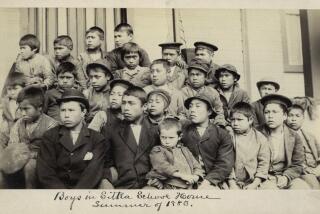Remaining Safe From the Remains
- Share via
A sixteen-year-old girl brings a heart-shaped box to her Arizona high school English class. The box contains the cremated remains of the girl’s mother, who died two years before. While showing the ashes to a girlfriend, the teenager inadvertently spills some of the ashes on the floor. The next day, 100 students are absent from the school.
What went wrong?
The students whose families boycotted the school were Native Americans, from the Hopi and Navajo who represent about half of the school’s 800 students. According to their beliefs, they could not enter a room where the remains of the dead had been spilled. They believed that if the classroom were not spiritually cleansed, the spirit of the deceased would remain in the area, posing a threat to them. Subsequently, a traditional Navajo medicine man and a Hopi spiritual leader conducted a cleansing ceremony that returned the spirit of the student’s mother to its resting place and allowed students to come back to school.
Generally, Native Americans do not cremate their dead, preferring the burial tradition. In preparing for burials, Navajos wash the deceased and afterward, many will not touch the body lest they leave their handprints or fingerprints on it. Older Navajos won’t go near the grave after a person is buried, but many in the younger generation will visit veteran’s cemeteries and other grave sites on memorial holidays.
More to Read
Sign up for Essential California
The most important California stories and recommendations in your inbox every morning.
You may occasionally receive promotional content from the Los Angeles Times.










